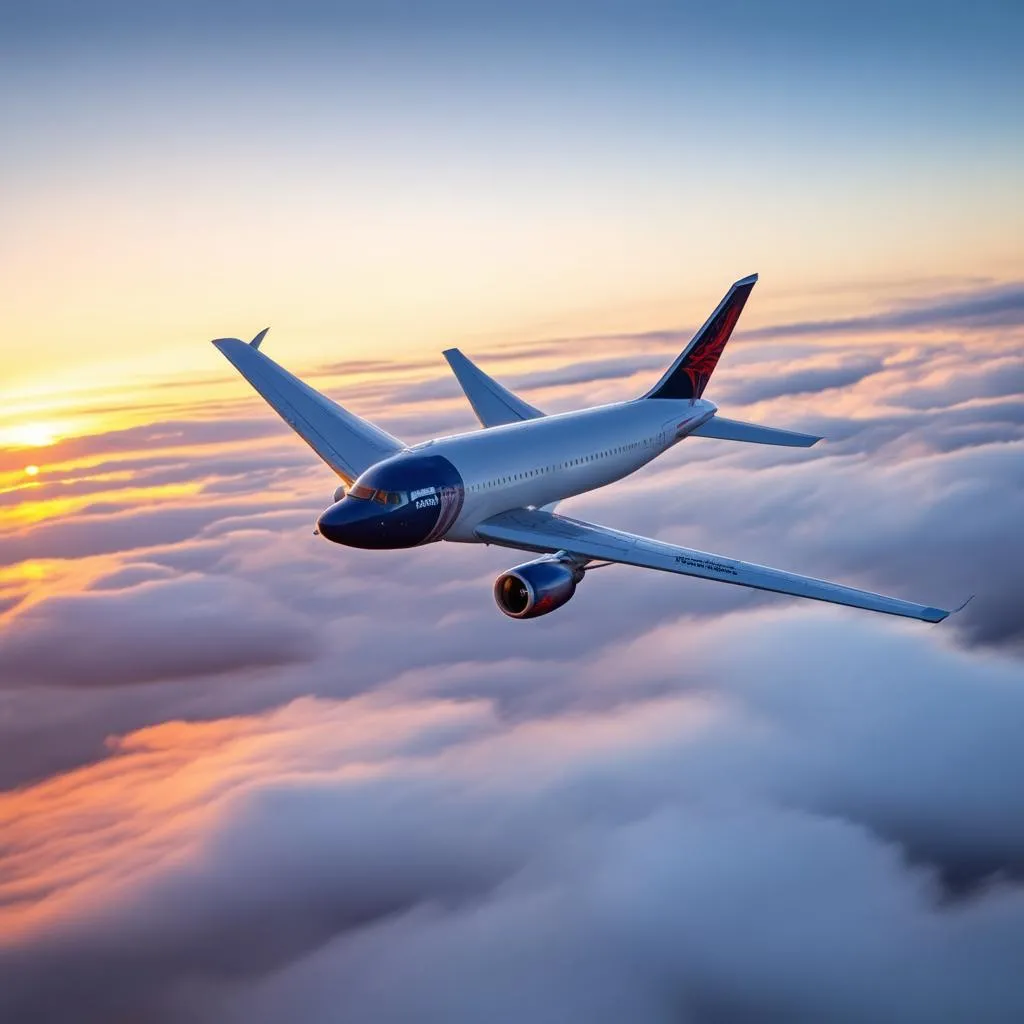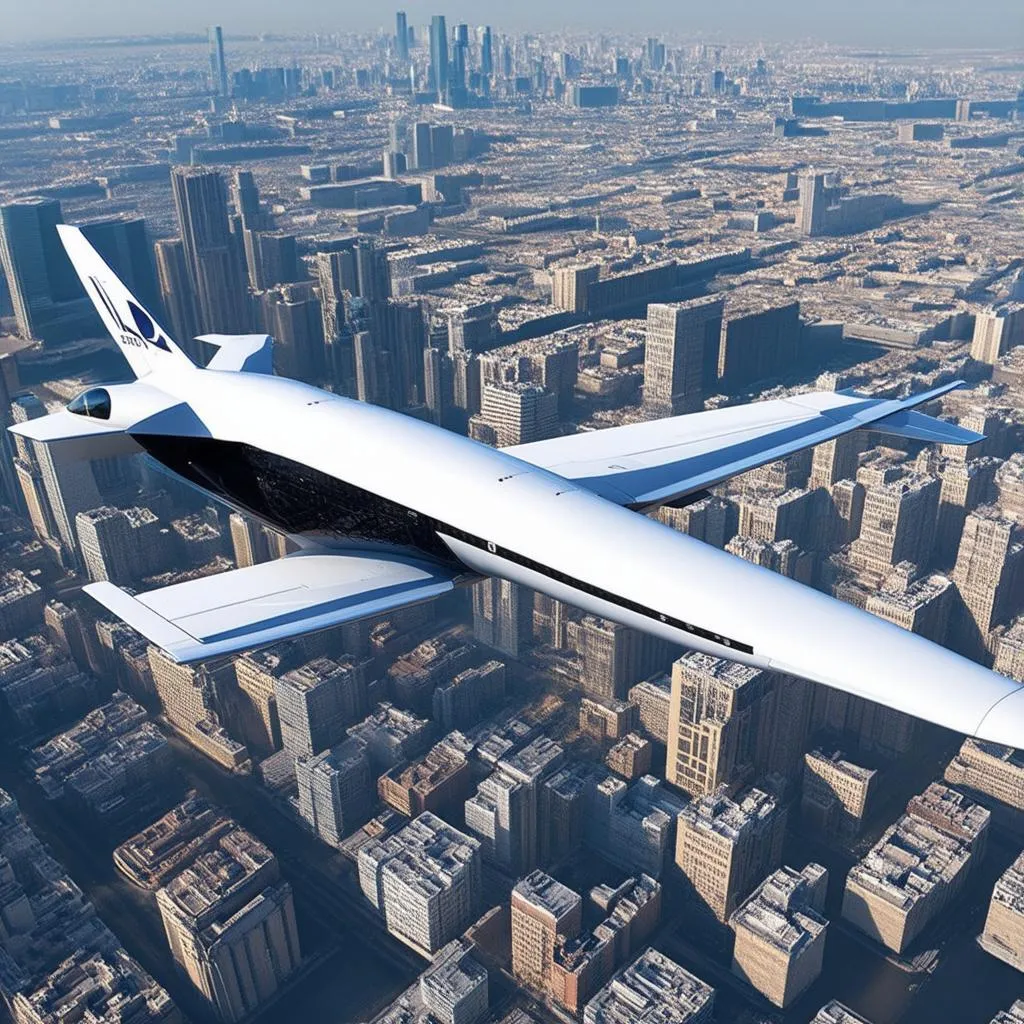Have you ever gazed up at a tiny speck crossing the vast expanse of the sky and wondered, “Just how fast is that plane going?” It’s a question that sparks the imagination, conjuring images of hurtling through the clouds at incredible speeds. Well, buckle up and get ready for takeoff as we explore the fascinating world of aviation speed.
The Need for Speed: Understanding Airplane Velocity
Unlike driving down the freeway, where speed limits are clearly marked, the speed of an airplane is a bit more complex. Factors like aircraft design, wind conditions, altitude, and even air traffic control play a role in determining how fast a plane can travel.
Different Strokes for Different Folks: Types of Airplanes and Their Speeds
Not all planes are created equal. Just like cars, they come in various shapes and sizes, each designed for a specific purpose. This directly impacts their speed capabilities:
Commercial Airliners: These are the workhorses of the skies, carrying passengers across countries and continents. Think Boeing 747s or Airbus A380s cruising at altitudes of 30,000 to 40,000 feet. Their average speed? Around 500-575 mph.
Private Jets: For those seeking luxury and efficiency, private jets offer a swifter way to travel. These sleek machines can reach speeds of 550-650 mph, allowing for quicker journeys and greater flexibility.
Propeller Planes: Remember that charming little plane you took on your island vacation? Those are propeller planes, known for their slower speeds (around 150-300 mph) and lower flying altitudes.
Military Aircraft: Designed for speed and agility, military jets like the F-16 Fighting Falcon can reach supersonic speeds, exceeding the speed of sound (approximately 767 mph).
The Jet Stream Factor: Riding the Wind Highway
Ever noticed how a flight from New York to London feels shorter than the return trip? That’s the jet stream at work! These powerful high-altitude air currents act like wind highways, boosting or hindering a plane’s speed depending on its direction. A plane flying with the jet stream can get a significant speed boost, while flying against it can mean a longer journey.
Breaking the Sound Barrier: Supersonic and Hypersonic Travel
Remember the sonic boom that rattled your windows? That’s the sound of an object, like a fighter jet, breaking the sound barrier. These supersonic speeds, while impressive, are generally reserved for military aircraft due to the intense noise and energy involved.
Pushing the boundaries even further is hypersonic travel, reaching speeds of Mach 5 (five times the speed of sound) or higher. While still in its experimental stages, hypersonic technology promises to revolutionize air travel, potentially reducing travel times dramatically.
 Airplane Speed
Airplane Speed
Planning Your Journey: Factors Affecting Flight Time
While it’s fascinating to delve into the science of airplane speeds, let’s get practical. When planning a trip, various factors come into play:
Distance: Obviously, a longer distance means a longer flight time, even at high speeds.
Route: Airlines choose flight paths based on factors like air traffic control, weather patterns, and fuel efficiency. This can influence the overall travel time.
Wind Conditions: As mentioned earlier, the jet stream can either be your best friend or your worst enemy when it comes to flight duration.
Tips for a Smooth Journey:
- Check the Flight Path: Websites and apps allow you to track your flight’s progress and see if it’s benefiting from tailwinds or battling headwinds.
- Factor in Layovers: Connecting flights can add significant time to your journey, especially if delays occur.
- Consider Time Zones: Crossing multiple time zones can affect your body clock, so be prepared for jet lag.
Beyond the Horizon: The Future of Air Travel
The pursuit of faster and more efficient air travel continues to drive innovation in the aviation industry. From supersonic passenger jets to electric airplanes, the future holds exciting possibilities.
Imagine boarding a plane and reaching your destination on the other side of the world in a fraction of the current travel time. While we haven’t quite reached the realm of teleportation (as seen in movies like “A Wrinkle in Time”), advancements in aerospace technology suggest that the skies are truly the limit!
 Future Air Travel
Future Air Travel
Frequently Asked Questions
Q: What is the fastest plane in the world?
A: The North American X-15 holds the record for the fastest manned aircraft, reaching a mind-boggling speed of Mach 6.7 (4,520 mph) in 1967.
Q: How long does it take to fly around the world?
A: The answer depends on factors like the route, speed, and number of stops. However, the fastest non-stop circumnavigation of the globe by airplane was achieved in just under 46 hours.
Q: Why can’t commercial airplanes fly at supersonic speeds?
A: While technologically possible, supersonic passenger flights face challenges like sonic booms, fuel efficiency, and environmental concerns.
Travelcar.edu.vn: Your Guide to Exploring the World
Whether you’re curious about the mechanics of flight or planning your next adventure, Travelcar.edu.vn is your go-to resource for all things travel-related.
From the bustling streets of Tokyo to the tranquil beaches of Bali, we provide insightful articles, travel tips, and destination guides to inspire your wanderlust.
So, the next time you see a plane soaring overhead, remember the intricate dance of science, engineering, and human ingenuity that makes it all possible.
Happy travels!